Koichiro Yoshino
Proactive User Information Acquisition via Chats on User-Favored Topics
Apr 10, 2025Abstract:Chat-oriented dialogue systems designed to provide tangible benefits, such as sharing the latest news or preventing frailty in senior citizens, often require Proactive acquisition of specific user Information via chats on user-faVOred Topics (PIVOT). This study proposes the PIVOT task, designed to advance the technical foundation for these systems. In this task, a system needs to acquire the answers of a user to predefined questions without making the user feel abrupt while engaging in a chat on a predefined topic. We found that even recent large language models (LLMs) show a low success rate in the PIVOT task. We constructed a dataset suitable for the analysis to develop more effective systems. Finally, we developed a simple but effective system for this task by incorporating insights obtained through the analysis of this dataset.
ClaimBrush: A Novel Framework for Automated Patent Claim Refinement Based on Large Language Models
Oct 10, 2024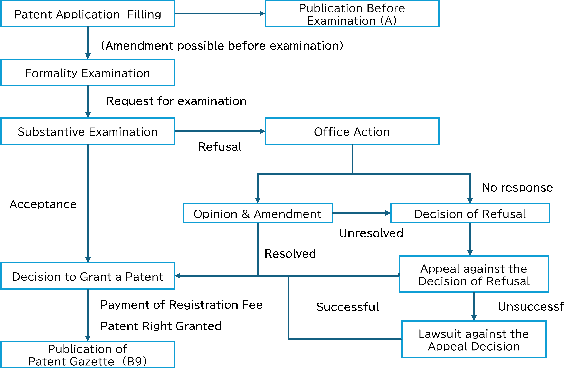
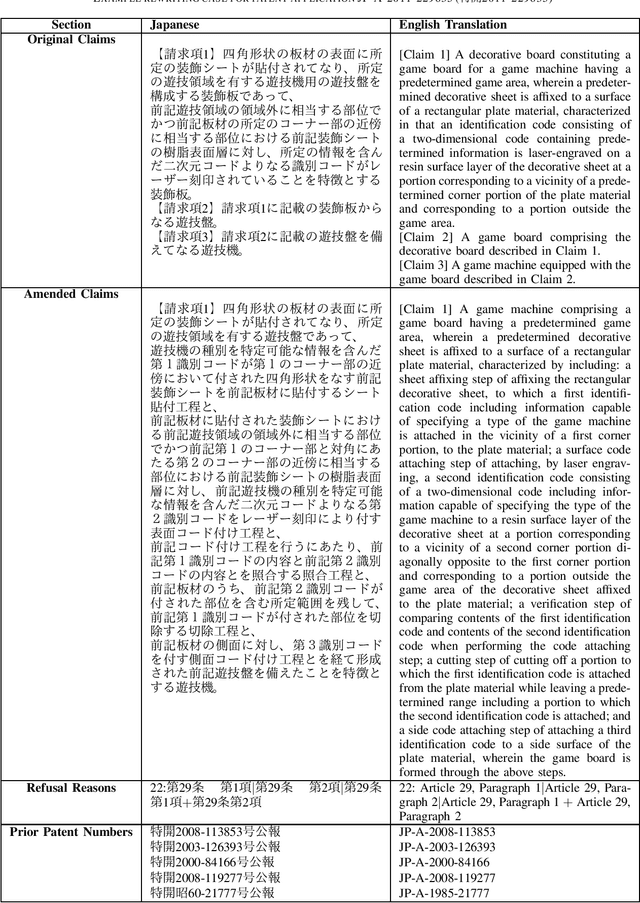

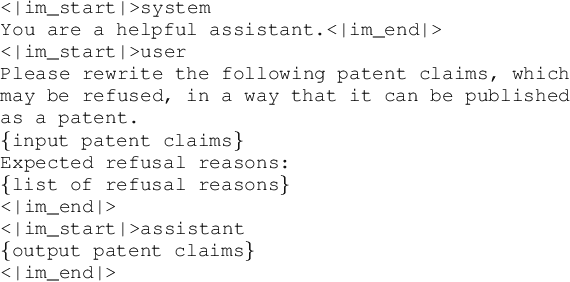
Abstract:Automatic refinement of patent claims in patent applications is crucial from the perspective of intellectual property strategy. In this paper, we propose ClaimBrush, a novel framework for automated patent claim refinement that includes a dataset and a rewriting model. We constructed a dataset for training and evaluating patent claim rewriting models by collecting a large number of actual patent claim rewriting cases from the patent examination process. Using the constructed dataset, we built an automatic patent claim rewriting model by fine-tuning a large language model. Furthermore, we enhanced the performance of the automatic patent claim rewriting model by applying preference optimization based on a prediction model of patent examiners' Office Actions. The experimental results showed that our proposed rewriting model outperformed heuristic baselines and zero-shot learning in state-of-the-art large language models. Moreover, preference optimization based on patent examiners' preferences boosted the performance of patent claim refinement.
LLM-jp: A Cross-organizational Project for the Research and Development of Fully Open Japanese LLMs
Jul 04, 2024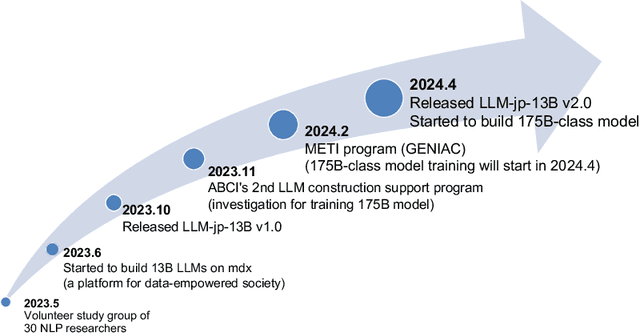
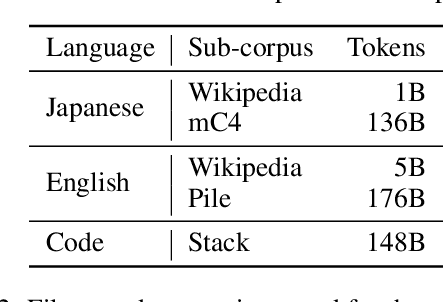


Abstract:This paper introduces LLM-jp, a cross-organizational project for the research and development of Japanese large language models (LLMs). LLM-jp aims to develop open-source and strong Japanese LLMs, and as of this writing, more than 1,500 participants from academia and industry are working together for this purpose. This paper presents the background of the establishment of LLM-jp, summaries of its activities, and technical reports on the LLMs developed by LLM-jp. For the latest activities, visit https://llm-jp.nii.ac.jp/en/.
Rapport-Driven Virtual Agent: Rapport Building Dialogue Strategy for Improving User Experience at First Meeting
Jun 14, 2024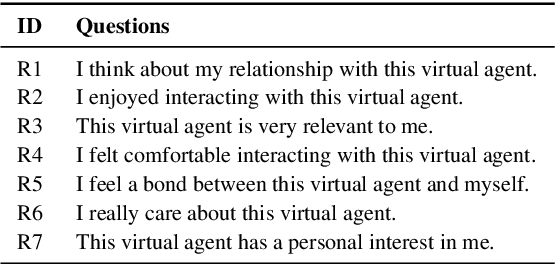
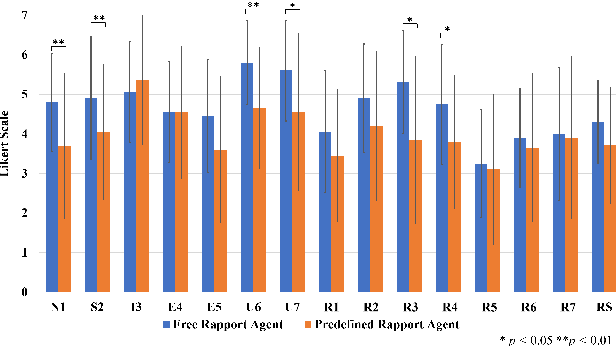
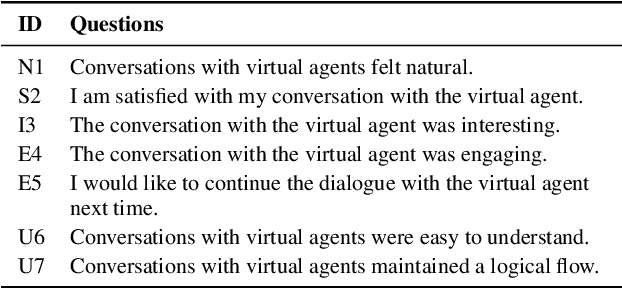
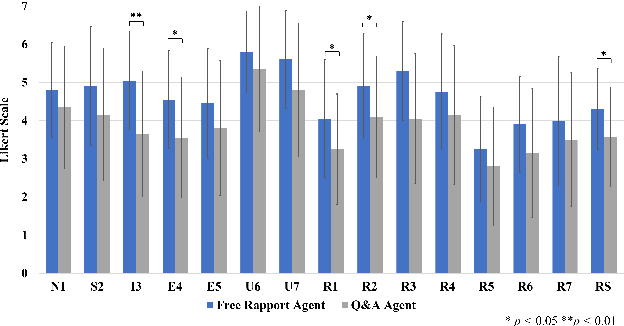
Abstract:Rapport is known as a conversational aspect focusing on relationship building, which influences outcomes in collaborative tasks. This study aims to establish human-agent rapport through small talk by using a rapport-building strategy. We implemented this strategy for the virtual agents based on dialogue strategies by prompting a large language model (LLM). In particular, we utilized two dialogue strategies-predefined sequence and free-form-to guide the dialogue generation framework. We conducted analyses based on human evaluations, examining correlations between total turn, utterance characters, rapport score, and user experience variables: naturalness, satisfaction, interest, engagement, and usability. We investigated correlations between rapport score and naturalness, satisfaction, engagement, and conversation flow. Our experimental results also indicated that using free-form to prompt the rapport-building strategy performed the best in subjective scores.
J-CRe3: A Japanese Conversation Dataset for Real-world Reference Resolution
Mar 28, 2024Abstract:Understanding expressions that refer to the physical world is crucial for such human-assisting systems in the real world, as robots that must perform actions that are expected by users. In real-world reference resolution, a system must ground the verbal information that appears in user interactions to the visual information observed in egocentric views. To this end, we propose a multimodal reference resolution task and construct a Japanese Conversation dataset for Real-world Reference Resolution (J-CRe3). Our dataset contains egocentric video and dialogue audio of real-world conversations between two people acting as a master and an assistant robot at home. The dataset is annotated with crossmodal tags between phrases in the utterances and the object bounding boxes in the video frames. These tags include indirect reference relations, such as predicate-argument structures and bridging references as well as direct reference relations. We also constructed an experimental model and clarified the challenges in multimodal reference resolution tasks.
A Gaze-grounded Visual Question Answering Dataset for Clarifying Ambiguous Japanese Questions
Mar 26, 2024Abstract:Situated conversations, which refer to visual information as visual question answering (VQA), often contain ambiguities caused by reliance on directive information. This problem is exacerbated because some languages, such as Japanese, often omit subjective or objective terms. Such ambiguities in questions are often clarified by the contexts in conversational situations, such as joint attention with a user or user gaze information. In this study, we propose the Gaze-grounded VQA dataset (GazeVQA) that clarifies ambiguous questions using gaze information by focusing on a clarification process complemented by gaze information. We also propose a method that utilizes gaze target estimation results to improve the accuracy of GazeVQA tasks. Our experimental results showed that the proposed method improved the performance in some cases of a VQA system on GazeVQA and identified some typical problems of GazeVQA tasks that need to be improved.
Whats New? Identifying the Unfolding of New Events in Narratives
Feb 20, 2023Abstract:Narratives include a rich source of events unfolding over time and context. Automatic understanding of these events may provide a summarised comprehension of the narrative for further computation (such as reasoning). In this paper, we study the Information Status (IS) of the events and propose a novel challenging task: the automatic identification of new events in a narrative. We define an event as a triplet of subject, predicate, and object. The event is categorized as new with respect to the discourse context and whether it can be inferred through commonsense reasoning. We annotated a publicly available corpus of narratives with the new events at sentence level using human annotators. We present the annotation protocol and a study aiming at validating the quality of the annotation and the difficulty of the task. We publish the annotated dataset, annotation materials, and machine learning baseline models for the task of new event extraction for narrative understanding.
What Should the System Do Next?: Operative Action Captioning for Estimating System Actions
Oct 06, 2022



Abstract:Such human-assisting systems as robots need to correctly understand the surrounding situation based on observations and output the required support actions for humans. Language is one of the important channels to communicate with humans, and the robots are required to have the ability to express their understanding and action planning results. In this study, we propose a new task of operative action captioning that estimates and verbalizes the actions to be taken by the system in a human-assisting domain. We constructed a system that outputs a verbal description of a possible operative action that changes the current state to the given target state. We collected a dataset consisting of two images as observations, which express the current state and the state changed by actions, and a caption that describes the actions that change the current state to the target state, by crowdsourcing in daily life situations. Then we constructed a system that estimates operative action by a caption. Since the operative action's caption is expected to contain some state-changing actions, we use scene-graph prediction as an auxiliary task because the events written in the scene graphs correspond to the state changes. Experimental results showed that our system successfully described the operative actions that should be conducted between the current and target states. The auxiliary tasks that predict the scene graphs improved the quality of the estimation results.
ARTA: Collection and Classification of Ambiguous Requests and Thoughtful Actions
Jun 15, 2021



Abstract:Human-assisting systems such as dialogue systems must take thoughtful, appropriate actions not only for clear and unambiguous user requests, but also for ambiguous user requests, even if the users themselves are not aware of their potential requirements. To construct such a dialogue agent, we collected a corpus and developed a model that classifies ambiguous user requests into corresponding system actions. In order to collect a high-quality corpus, we asked workers to input antecedent user requests whose pre-defined actions could be regarded as thoughtful. Although multiple actions could be identified as thoughtful for a single user request, annotating all combinations of user requests and system actions is impractical. For this reason, we fully annotated only the test data and left the annotation of the training data incomplete. In order to train the classification model on such training data, we applied the positive/unlabeled (PU) learning method, which assumes that only a part of the data is labeled with positive examples. The experimental results show that the PU learning method achieved better performance than the general positive/negative (PN) learning method to classify thoughtful actions given an ambiguous user request.
Reflection-based Word Attribute Transfer
Jul 07, 2020Abstract:Word embeddings, which often represent such analogic relations as king - man + woman = queen, can be used to change a word's attribute, including its gender. For transferring king into queen in this analogy-based manner, we subtract a difference vector man - woman based on the knowledge that king is male. However, developing such knowledge is very costly for words and attributes. In this work, we propose a novel method for word attribute transfer based on reflection mappings without such an analogy operation. Experimental results show that our proposed method can transfer the word attributes of the given words without changing the words that do not have the target attributes.
 Add to Chrome
Add to Chrome Add to Firefox
Add to Firefox Add to Edge
Add to Edge